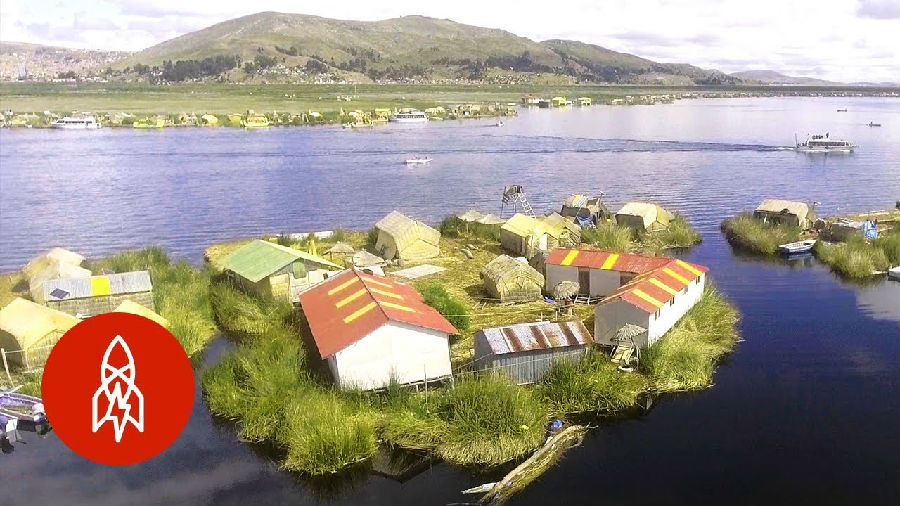Lake Titicaca is home to moveable floating islands that were created by humans and where over 500 people still reside today.
的的喀喀湖上坐落着众多可移动的人工浮岛,岛上现在仍有500多人居住。
Living on not so solid ground isn't for everyone,
在并不很结实的岛上生活并不适合每个人,
but a small South American tribe in Peru, known as Uros, have created and maintained this unique way of life.
但南美洲一个名为“乌多斯”的秘鲁小部落就创造并维持了这种独特的生活方式。
The community is made up of roughly 70 human-made islands and one large central island, which is the hub for the tribe.
该社区由大约70个人造岛屿和一个大型中央岛屿组成,这里是部落的中心。
They use dried reeds that grow along the banks of the lake and shape them into floating platforms and boats.
他们将生长在湖边的香蒲晒干,编成浮台和小舟。
These platforms can be moved from the mainland if required, which was originally a defense strategy to escape danger.
需要时他们会将这些浮台从岸边推走,这也是一种防御方式,以前人们就靠这种办法逃避危险。

The reeds are interwoven densely to be about 80 inches thick.
芦苇被扎成80英寸(约2米)厚密不可分的平台。
Large logs are attached through the reeds and anchored to the river floor.
大原木则通过芦苇连接并固定在河床上。
Over time the reeds tend to rot, and so they are replaced four times each year.
随着时间的推移,芦苇会腐烂,因此每年要更换四次。
The community is home to the new and old world.
这里不仅是旧世界,也是新世界的家园。
The reeds are used as medicine and the flowers drunk as tea.
芦苇被用作药物,花儿则用来泡茶。
However, the solar panels are used to help run some electrical appliances,
此外,人们也会用太阳能电池板给电器供电,
and the central island is home to a radio station.
中央岛也是一个无线电台的所在地。
Until the mid-'80s, the islands were located further out in the lake and were inaccessible by visitors.
直到八十年代中期,这些岛屿都架在了离岸较远的地方,游客无法进入。
However, after a devastating storm, the tribe as moved closer to land and started welcoming tourists to experience their way of life.
然而,一场毁灭性的风暴过后,部落便搬到了里陆地更近的地方,并开始欢迎游客体验他们的生活方式。


